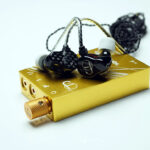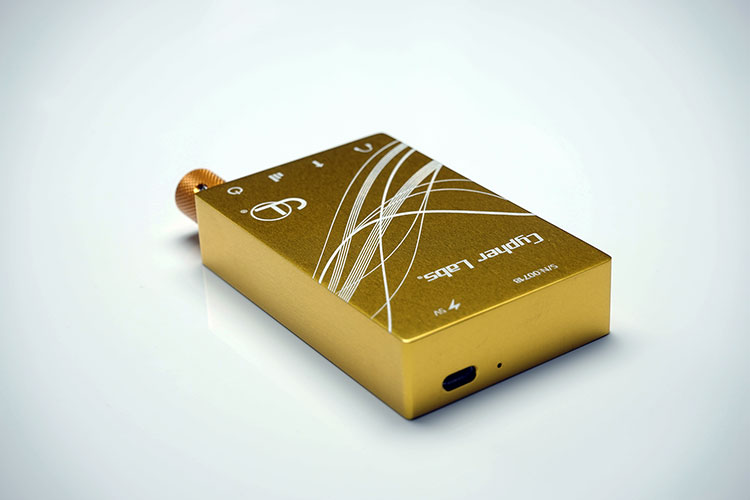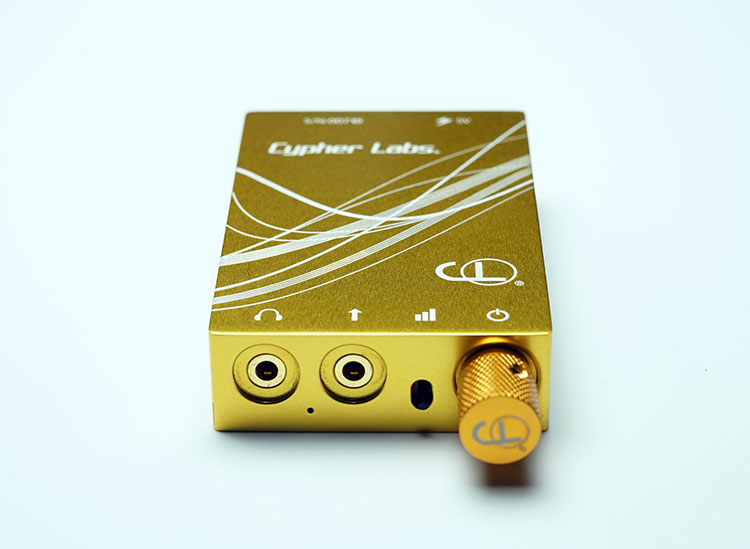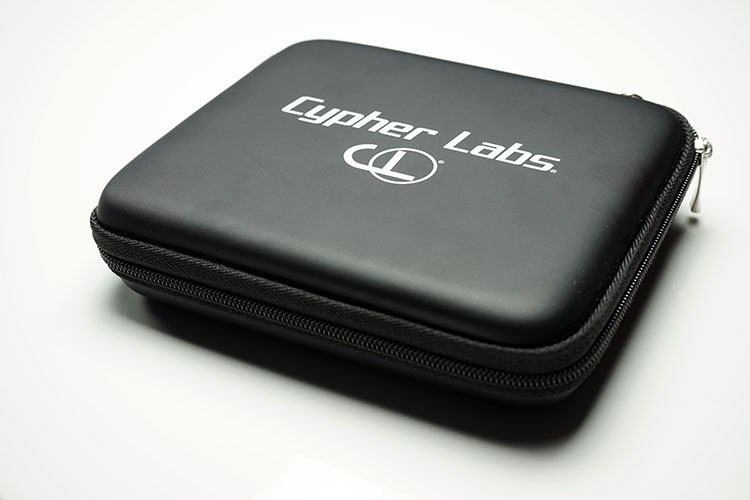In this feature, we review the Cypher Labs AlgoRhythm Picollo, which is an attractively designed discreet topology analog portable headphone amplifier. It is priced at $399.
Disclaimer: This is a sample sent to us in exchange for our honest opinion. Headfonics is an independent website with no affiliate links or status. We thank Cypher Labs for this opportunity.
To learn more about Cypher Labs products featured on Headfonics you can click here.
Note, that this article follows our latest scoring guidelines which you can read here.
Road Map
The Picollo Amp was released actually sometime in 2014 but in a chance discussion with David Maudlin of Cypher Labs about the C6IEM and having reviewed the Picollo DAC/AMP already he mentioned that I should really try out the amplifier-only version.
Well, why the heck not eh? It has seen a largely positive response in forums and blogs in the last several months and at a price point of $399 SRP, it is the cheapest amplifier unit Cypher Labs has to offer in their quality range of portable amps.
As such it is attainable for quite a few of us budding audiophiles as well as the fact that the time feels just right for us on our audio journey to revisit portable amps. We have been reviewing a glut of great IEMs this year and given the Picollo is rolled out as an amp targeting IEMs, in the same vein as the RX from ALO Audio, then color me interested.
Well actually color me interested in gold because I just had to match it up with the DAC version and get another one of those bullion-type lookers. Most opt for black or silver, but Nah, Going For Gold as Henry Kelly would say and quite rightly my bling radar was on full alert when this landed.
What You Get
You get a duplicate of many ways to the DAC package. This is no bad thing though actually and remember the amp did come out first.
I do like it when a company finds its groove when it comes to packaging and accessories and in the molded semi-hard case for its Picollo range, Cypher Labs have done exactly that. So very few amps have a purpose-built hard case like the Picollo amp and it is a real bonus with real protective value against dust, some level of liquid, and the usual knocks and bumps.
True enough the amp is very pocketable in its own right but a day beside my oversized pick-up keys and a dose of spare change and I do not fancy the amp’s chances of escaping unscathed.
Given there is no DAC functionality there are no OTG cables instead you just get the 3.5mm to 3.5mm short IC connector as well as the USB A to Micro USB charging cable for the amp, the branded leather strap for absorbing stacking shocks and two rubber straps for “da stacking” itself.
You can actually clear all that out on a good day out and stick a small DAP and earphones in there and have a very nice traveling audiophile kit.
Design
Now blink and you might miss it because there is not a whole lot going on the outside of the Picollo amp that would distinguish it markedly from the Picollo AMP/DAC version apart from the $100 price difference.
Both are very compact, slightly heavier than you would think and gorgeously designed from a single block of CNC-machined aluminum. In fact side by side, the two are almost identical apart from the decal of the DAC version that simply says Picollo DAC.
The dimensions of the amp version are 55x85x18mm which is just the tiniest bit smaller than the DAC measuring in at 20x53x 88mm.
The front and back look the same also. Both back panels come loaded with a single micro USB slot at the back of the amp for charging only and a small red LED light to denote charging when plugged into any 5v USB power source.
Front Panel
The front panel has the same four icons on the top plate denoting headphone out, line-in, gain, and volume which seems to be the same kind of analog pot used on the DAC version. The headphone jack output is the usual recessed 3.5mm as is the adjoining line input for your source of choice.
The gain switch has three levels, low (-12db), medium, and high (+11.5db). That’s a fairly hefty swing right there and exactly the same as the DAC/AMP capability and though I would ideally pitch this amp as an IEM amp of choice.
Given its output impedance is less <1 Ω there is definitely enough oomph there for some regular-size dynamic portable cans and even adequate noise levels from easier-to-drive planars such as the HE400i and of course the Oppo PM range.
Internal Hardware
Discreet
Perhaps the major difference physically between both apart from the fact there is no DAC in the Picollo amp is the design circuitry itself being a discreet design rather than the DAC’s more commonly used opamp design.
Now opamp designs do indeed allow for better utilization of space inside the newer amp/DAC unit for both an amp and DAC setup but there is something really old school and darn audiophile about a discreet amplifier design and Cypher Labs have really touted this as a key feature of the Picollo amp.
Triode Circuit
At the most rudimentary of levels, the Picollo amp is a work of a human effort with an old-school triode circuit but with no less than 10 matched triodes inside the amp.
Now matched doesn’t come ready-made, matched means by hand which can be time-consuming, to say the least, and the space utilization inside the amp is much less efficient hence the similar dimensions to the DAC which uses a more slimline opamp circuit.
But the flipside to this methodology, quite apart from a better selection of components, is a clean interface, tuning is in the control of the manufacturer rather than using a ton of filters to an existing set of circuits and a much cleaner topology. In theory, the Picollo amp will produce a better signal output. A better signal output will mean that it should sound pretty good.
Battery Life
Battery life on the amp version is impressive, very impressive indeed. The DAC unit is rated at 12-18 hours and 24 hours as an amp only but the analog discreet Picollo amp can tap out at closer to 30 hours depending on usage conditions.
That is about as good as it gets for portable analog amps and given the battery is a humble 2000mAH/3.7V lithium it is not even the biggest out there. That’s up to 10 hours more than the E12a and around 15 hours more than the Cayin C5 portable amp and on par or slightly better than my other favorite portable amp the Vorzamp Duo which is a healthy 25 hours also on 2000mAH.
Charging time is the regular 4 hours on any USB 5v power source and yes you can play it while charging. The little red led pinhole light on the amp acts in much the same way as the DAC during charging staying steady red until it charges fully then it switches off.
Sound Impressions
Summary
Cypher Labs did a good job with the DAC/AMP opamp version because there is not much to separate both it and the discreet amp-only unit in terms of tonality. The discreet amp-only version of the Picollo came out first so the blueprint was there to mimic and in reality, your initial listen might make you think why get this when for $100 more you can get the same with a DAC thrown in.
However after a bit of burn-in, after all, there are 10 triode pairings in that amp to warm up, the amp does seem to present subtle and superior differences.
The amp still has that core signature at heart that I first encountered with the DAC/AMP unit earlier this year; a slightly warm to neutral tonal quality that is easier going and naturally presented than a visceral or in-your-face signature. The response is smooth, the transitions are linear, the vocals are full and detailed and there is a slight fullness in the bass to support it all.
Bass
I still go with smooth and clear over dynamic and clean but with the amp version, there are discernable and welcome differences to my ear with the bass signature. In the DAC unit, I felt that the bass was detailed, tight, and reasonably linear and could deliver a decent hit when needed but was never in your face or bloated.
With the Picollo analog amp, the bass is still relatively tight and pacey but it sounds a little fuller and more present than its sibling DAC. Switching back and forth a zillion times and the difference became more and more noticeable.
It’s more nuanced than black and white but slap on a neutral or reference IEM such as the Noble 4 Classic and you can detect that fuller sounding and slightly lower hitting bass on the analog amp.
If I had to pick one of the two purely for the bass response on an IEM I would definitely go with the analog version matched to a good source, particularly for EDM.
Mids
The mid-section of the Picollo amp, much like the DAC unit is once again a stellar performer but with an ever so slightly lusher more liquid response than the DAC unit. They are still slightly forward much like the PDAC but they just sound a bit more natural, a bit more accurate with a more pleasing timbre than the PDAC.
I remarked in the PDAC review also that vocals, in particular, female vocals sounded excellent with very little grain, well the Picollo amp really is a step up for me with a very smooth and controlled performance.
Comparing the two with a few tracks from Laura Mvula’s Sing to the Moon album and the PDAC sounded just a tad drier and more sibilant on Laura’s soulful vocals than the Picollo amps more natural and free-flowing smooth vocal performance.
That is not to say the PDAC is not as good as when we reviewed it, we just think we might have found something marginally better amping-wise.
Vocal harmonies also on Laura’s Green Garden, a solid example in imaging and layering also performed with a bit more confidence and dynamics than the PDAC which sounded great but a bit more centered with slightly less width and separation.
Again after switching back and forth about 10-15 times over a 1-minute stretch of these tracks the subtle differences just got more and more noticeable.
Treble
As with the Picollo DAC, the Picollo analog amp has a neutral almost easy-going treble response that suffers little in the way of peakiness, sizzle, or stridence.
You could argue also the amp suffers the same lack of extension as the DAC and in most cases, I would say yes but after again going back and forth on some more of Laura Mvula’s wonderful Sing to the Moon I do detect a slightly more defined lower treble in terms of detail and space over the PDAC.
Harps strings on Can’t Live with the World have more sparkle in the pluck and more presence in general over the PDAC. It is a qualitative rather than a quantitative difference and you are only going to notice this after a number of quick-fire switches between both units, otherwise, on casual listening, they will sound relatively similar.
Synergy
Efficiency
Noise levels are incredibly low for the Picollo amp, much lower than any other Cypher Labs amp on the market right now including the Theorem and Duet. Very little detectable channel imbalance but the noise floor on the pot is not an absolute zero in terms of audio playback volume. It’s very tiny, almost unnoticeable but it’s there.
Of course, this will not matter one bit given audible levels of listening are noise-free but in short, you will have to be looking for it to find it. The gain switch on the amp is the same level of db swing on the PDAC and it’s quite a hearty swing also.
Jacked out of an iPod Classic though mid-gain felt far more comfortable and low gain, much like the RX on the iPod just felt a bit little lacking with too much required out of the Classic. On all other DAPs such as the DX90, Cayin N6, and the FiiO range there were no such issues.
The smooth response for IEMs, in general, is best served in the low gain setting. By the time you switch up to high-gain things become a little difficult to manage with most IEMs as well the sound sounds a little bit harsher. Best reserve high gain for easy-to-drive headphones.
Pairings
Tonality wise for earphone matching it is not as clear cut as saying grab a neutral or bright earphone to match with the more easy-going treble response of the Picollo.
The detail is there and it is quite a flexible amp in terms of impedance output at less than 1 ohm so IEMs such as the Noble 4 Classic, the Westone 4, and the UE900s all have next to no noise and very good control from the pot.
All earphones worked perfectly fine on low gain or medium from the iPod Classic. If anything I preferred the Westone 4’s response a little more than the Noble, sounding a bit smoother and freer-flowing though the Noble really brought home the bacon over the Westone 4 on detail retrieval with the Picollo.
Source wise the Cayin N6 and DX90 had the best match with the Picollo. Both have solid line-outs with excellent detail in the treble and better-than-average dynamics and sound staging. The Picollo simply adds a little to the equation in terms of the body, particularly in the bass, and with a nice focus on the vocals.
The RX or the Picollo?
There is a bit of good fortune in the timing of this review in that ALO came out with their pocket rocket RX amp which I highly rated a few weeks ago. The Cypher Labs Picollo amp competes quite well actually with the RX but offers something a little different from the RX.
Both have excellent black backgrounds, perhaps the RX shades it a little, and both can cope with just about any IEM thrown at it with a high degree of control. However, the tonality of both might see you pick one or the other depending on your match or mood.
If you want dynamics, impact, clean neutral speedy detail retrieval then it is the RX all the way. This is a super engaging little amp that really throws out a big sound stage, plenty of space, and excellent imaging.
However, if you want a more laid back more intimate sound with a very natural vocal presence, great mid-emphasis and a heftier bass response then the Picollo might be the better choice. If I could call it one sentence – the RX presents the bigger picture whereas the Picollo focuses on the moment. I hope that made sense.
Also, power-wise the Picollo can reach beyond IEMs with more comfort and ease than the RX. The RX can give volume but it’s thinner and less convincing and that sound stage gets progressively smaller on the bigger cans.
The Picollo can extend that bit further with the likes of the HE400i and the AKG K501 within its reach. I would still grab something a bit more power than either of them but that added flexibility might appeal to a few who own both cans and earphones.
Our Verdict
It came out before the RX and in many ways, it is a competitor. It has a similar price bracket, similar form factor, and a similar target market – IEM users primarily.
Yet the Picollo can also sit quite happily beside the RX and they complement each quite nicely in terms of tonality with one going for speed and neutrality and the other going for body and musicality.
I can see the Picollo being something more for the soulful, the vocal, and with that better bass body a superior buy for EDM. It can also reach out to more powerful headphones than the RX giving a bit more flexibility if required.
The Picollo amp fills an important gap in the Cypher Labs range with the pricier Duet and Theorem really for less sensitive cans and planars and costing a few bucks more. It won’t match them for pure fidelity but at $399 I would urge you to go for this over a Duet or Theorem if you are holding a set of mid-tier customs or universals that require better sensitivity handling and lower noise floors.
If you need a DAC to boot then the PDAC at $499 is not that far away either these days with a very similar sound. Stack one gold on top of the other is also kind of cool in headphone meets but I get a feeling I may be on my own in the color choice.
Cypher Labs AlgoRhythm Picollo Technical Specifications
- Size: 55mm x 85mm x 18mm (100mm with knob)
- Weight 5oz / 140grams
Frequency response
- 5Hz-50kHz ±1dB
Output power
- 200mW into 32Ω
- 100mW into 50Ω
- 35mW into 300Ω
- 10mW into 600Ω
- <1 Ω Output Impedance
Power and Battery
- Built-in Rechargeable Lithium-ion battery Sanyo UF103450P 2000mAH/3.7V
- Playtime: 24-30 hours
- Recharge Time from PC: 4 hours
Package Contents
- Cypher Labs AlgoRhythm Picollo
- User Guide
- Mini to mini interconnect (20cm)
- Cypher Labs straps to bundle devices for travel (2 – 150mm straps)
- Black USB A to micro USB cable (connect to your computer or USB charger)











